Causes of balsam diseases and their treatment

Balsam is an elegant houseplant that captivates with its fragility and spectacular flowering. Another popular name is the "Vanka wet" flower. According to experienced flower growers, the cultivation of these unpretentious creatures is within the power of even beginners who are taking their first steps in indoor plant growing. However, even such unpretentious flowers are not protected from problems associated with diseases and pests. It is worth considering what diseases and parasites pose the most common threat to balsams, how to determine in a timely manner that plants need help.

Common diseases of balsam and their treatment
One of the main signs indicating that "Vanka is wet" requires the help of a grower is a change in the appearance of the plant. Strange staining, dropping, discoloration or wilting of leaves are the most common signals that indicate a problem. In most cases, the cause of the development of diseases or damage to balsam by pests is improper care.
When the conditions of keeping the plants are violated, immunity begins to rapidly decrease, ensuring their resistance to parasites and pathogens. Some diseases are detrimental to balsams. Given this fact, it is important to take all the necessary measures in time, barely noticing that the flower has acquired a painful appearance.
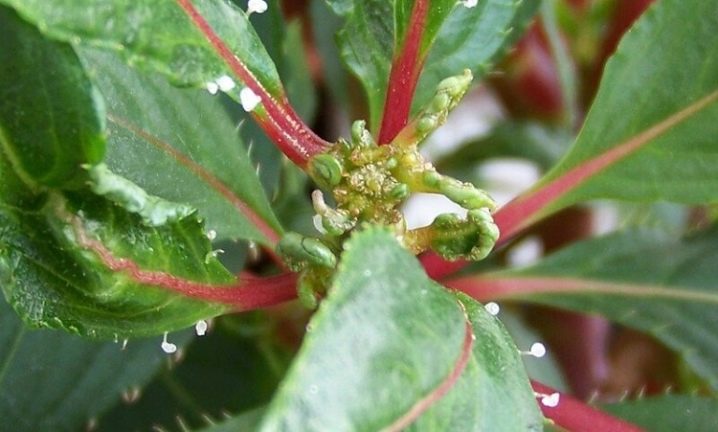
Bacteriosis
The fact that the plant has become a victim of a dangerous disease - bacteriosis, is evidenced by the formation of gray-brown spots on its leaves. As the disease progresses, traces of the lesion turn black-brown. Among the main causes of bacteriosis, flower growers call an excess of moisture in the soil. In addition, it is possible to infect balsam with bacteriosis pathogens through infected (low-quality) soil or untreated instrumentation. This disease is very dangerous, since most often the plant affected by it dies rather quickly.
In most cases, diseased flowers must be destroyed. However, you can try to compete for your green pet as follows:
- remove all affected parts of the plant;
- thoroughly spray the bush and soil in the pot with a solution of copper oxychloride (4 grams of substance per 10 liters of water);
- repeat treatment after 2 weeks.
Important! During treatment, the plant must be isolated from healthy flowers. Given that this disease is highly contagious, the risk of spreading throughout the green collection is very high.

Powdery mildew
The fact that the plant has suffered from powdery mildew is indicated by specific whitish spots that form on the leaves. If you do not start treating the disease in a timely manner, very soon the affected leaves will fade and fall off. The main causes of this disease are violations of the temperature and humidity regime, incorrect watering and lack of lighting. The powdery mildew treatment complex provides for such measures as:
- removal of the affected parts;
- treatment of the bush with a soap and soda solution (1 tablespoon of soda ash, 2 tablespoons of soap, 5 liters of warm water); the treatment of the plant is carried out using a spray bottle for indoor flowers;
- after 1.5–2 weeks, the procedure is repeated.
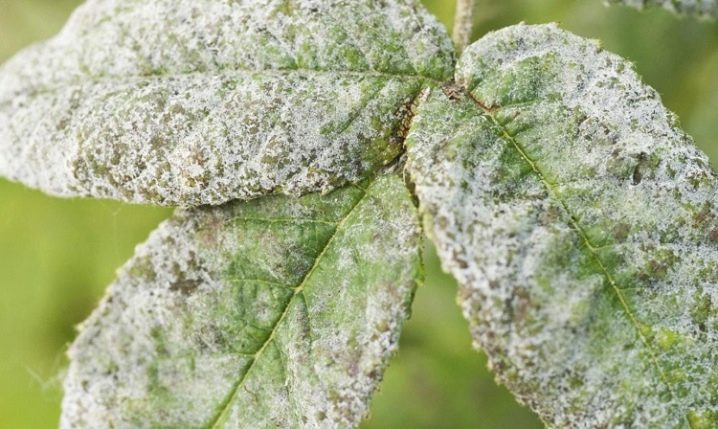
Mosaic
Mosaic is one of the most dangerous diseases that lead to the death of balsams. Specific symptoms of this disease are the formation of yellowish spots and deformation of the foliage. As the disease progresses, the tissue of the affected leaf plates undergoes necrosis, as a result of which the plant gradually turns yellow and eventually dries up completely. The main carrier of the causative agents of this disease are thrips - tiny parasites that live in the soil.
Since there are currently no effective treatments for this disease, diseased plants are usually destroyed.
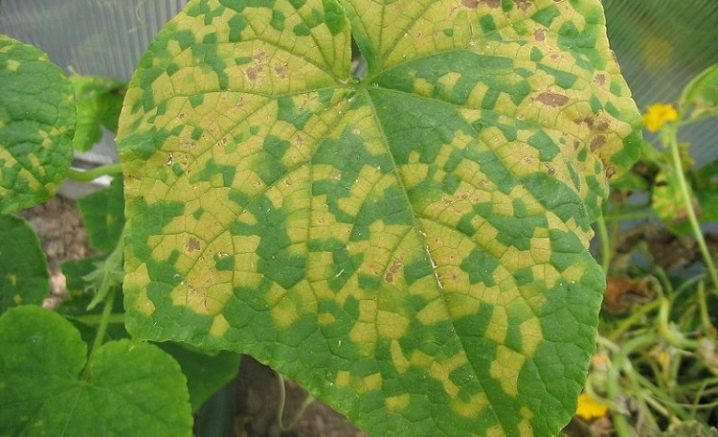
Rot
Failure to follow the recommendations for caring for plants often becomes the cause of the development of an insidious fungal disease - gray rot. With this problem, dirty brown spots begin to form on the foliage of the affected balsams. Novice flower growers are often faced with the development of rot on balsams as a result of watering with cold water, as well as due to too low room temperature. To preserve the plant, you need to adhere to the following actions:
- remove all infected parts of it - leaves and stems covered with spots, in this case they are cut off with a sharp disinfected blade, after which they are destroyed;
- after the procedure, the diseased bush is thoroughly treated with fungicidal preparations ("Fundazol");
- to make the treatment more effective, you can sprinkle the plants with products prepared according to folk recipes, for example, an infusion of dry garlic or onion peels.
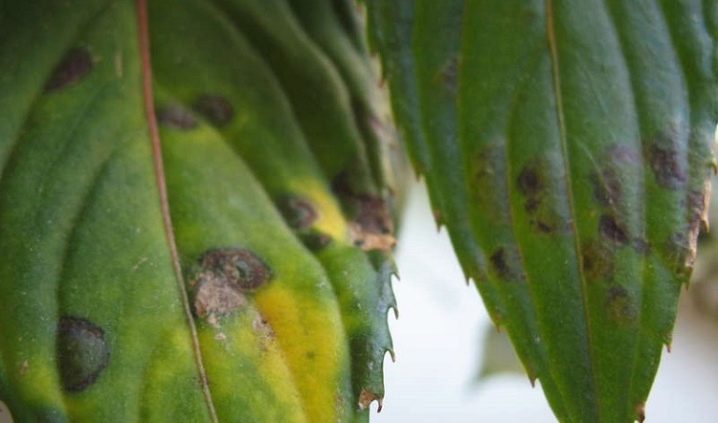
Pests
Balsams are quite resistant to pest attacks, but flower growers often have to face this problem. Some parasites can be detected with the naked eye, others with a magnifying glass. The activity of the third can be told by the corresponding traces of vital activity - fragments of cobwebs, spots and dots on leaves, buds and shoots.
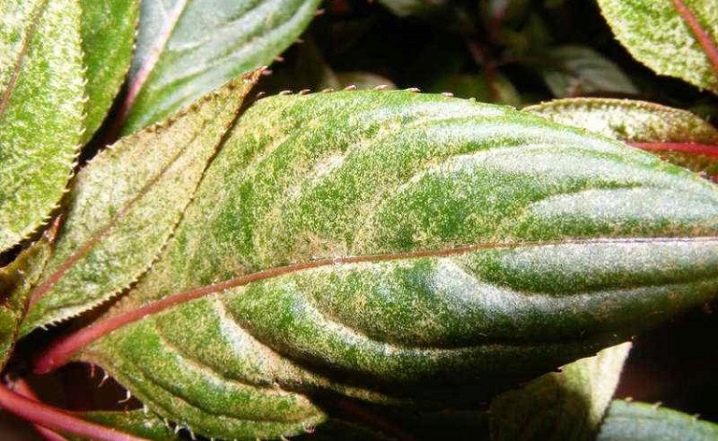
Spider mites
Very often, weak balsams become victims of spider mites. The fact that the plant has suffered as a result of the activity of these pests is evidenced by the formation of a whitish bloom on the leaves with a fibrous structure. This plaque is a waste product of mites that feed on flower juices. In most cases, these parasites enter pots of indoor plants from the outside environment.
They can be brought into the house on clothes, shoes. And also the source of the spread of pests can be contaminated soil purchased from a dubious store or made with your own hands from untreated components. Chemicals are used to kill ticks - "Aktellik", "Fitoverm".
The process of plant treatment will go much faster if the affected bushes are additionally sprayed with soapy water.
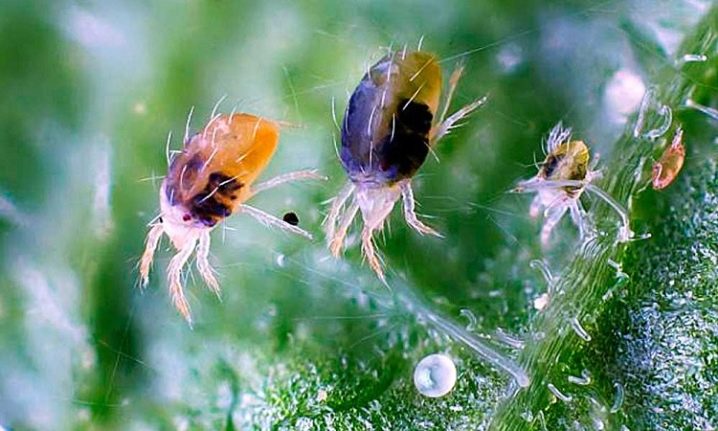
Aphid
These tiny pests often annoy indoor flower lovers. The fact that the green pet suffered from the activity of aphids is evidenced by yellowing and deformation of its leaves, buds and shoots.
With excessive damage to plants by aphids through a magnifying glass, one can see not only traces of their vital activity (accumulation of a sticky substance), but also the colonies of the parasites themselves, which usually gather on the seamy side of the leaves. Strong chemicals can help get rid of the problem - Fitoverm, Decis... A well-proven remedy in the fight against aphids Actellik.
Additionally, the affected plants are recommended to be treated with soapy water or a solution of tobacco dust.
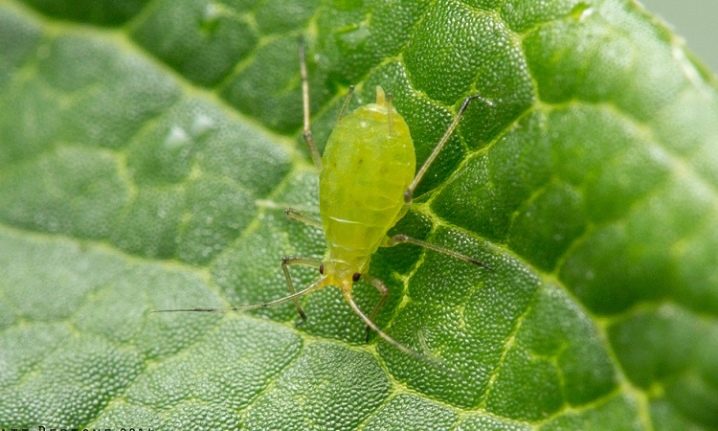
Whitefly
One of the most difficult parasites to kill is the whitefly. This is a tiny white butterfly that causes serious harm not only to flowers growing at home, but also to plants in open ground. To destroy this pest, pesticides are used - "Karbofos", "Dichlorvos". Help to effectively deal with the problem and tools such as "Fufanon", "Actellik".

Why do buds fall?
Often, beginner growers are faced with situations when the "Vanka wet" flower begins to shed its buds. The main reasons for this phenomenon include violations of the temperature and humidity regime, excess nitrogen in the soil mixture and potassium deficiency. Another reason that can cause the buds to fall is a draft. Balsams are very painful to tolerate drafts and cold snaps, which are stressful factors for them. It is also necessary to check the condition of the soil mixture in the pot. It should not be waterlogged.
Despite the fact that this flower loves regular watering, excess moisture in the soil can cause its roots to die off and buds fall off.
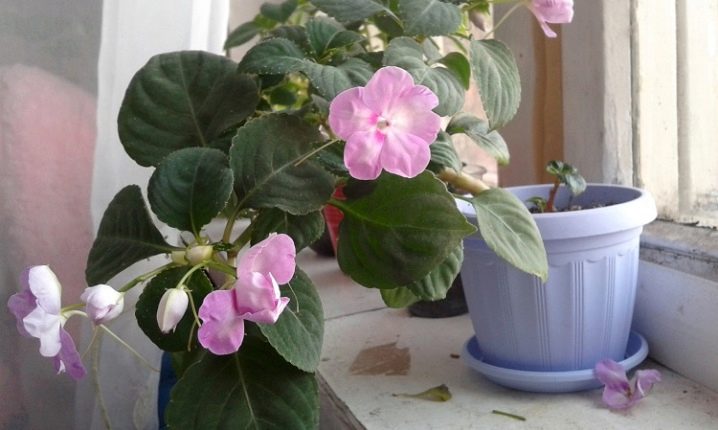
Why do the leaves curl?
There could be several reasons.
- Curling and deformation of the leaves often indicate that the flower lacks moisture and light. These indoor plants do not tolerate lack of watering and darkness.
- Very dry air in a room can also cause leaves to curl. In this case, spraying allows them to restore their previous appearance.
- Direct sunlight can adversely affect the condition of the leaves. To protect the plant from sunburn, it needs to be provided with soft but sufficient lighting. It is recommended to shade balsams in hot and sunny weather.
Important! Having noticed that the plant is dying, and the shape of its leaves has changed greatly, it is important to carefully examine the flower for the presence of pests or traces of diseases. Inspection of the problem plant is best done using a magnifying glass.

Why does balsam wither and dry?
Withering and drying of a plant is a common result of improper care. At the same time, both deficiency and excess of moisture in the air and soil mixture can cause such a problem. To restore the appearance of a plant affected by drought, it is enough to resume the previous irrigation regime. But it is also impossible to allow waterlogging of the soil, so as not to destroy the roots.
Another reason for the wilting of balsam is often lack of nutrients. In this case, you can give strength to the plant by feeding with humic fertilizers. And also flower growers argue that in some cases iodine will help to eliminate the painful appearance of a flower. To do this, no more than 1 time per month, use a solution of 2 drops of iodine and 2 liters of water. With this solution (about 50 ml per plant), carefully spill the earth against the walls of the pot so as not to burn the root system.
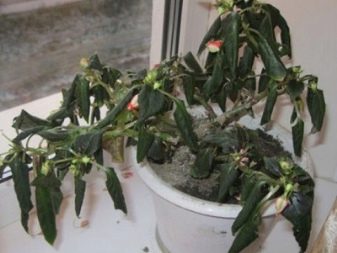
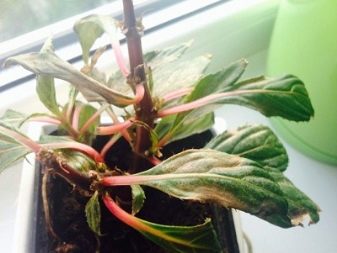
How to save a frozen plant?
Drafts and temperature drops are detrimental to delicate balsams. If they became the reason that the plant began to die, you can try to correct the situation. To do this, all the frostbitten parts of the flower are removed and cut to a living and healthy tissue, after which watering is temporarily reduced. While the injured balsam is sick, he is provided with extremely gentle conditions. In some cases, growers save the plant in a radical way, dividing it into cuttings.
Frozen leaves on cuttings, as in the previous case, are removed and cut to intact tissue.
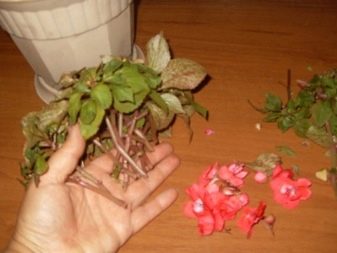
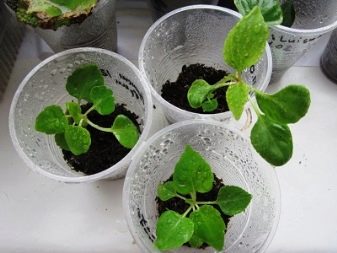
Prevention and proper care
In order for balsams to please their owner with luscious green foliage and regular flowering, they need to provide comfortable living conditions. So, caring for balsam at home provides for the fulfillment of such important conditions as:
- diffused lighting in sufficient quantity during the day;
- regular abundant watering (in summer), excluding waterlogging of the soil;
- high-quality soil mixture and the presence of a drainage layer in the pot;
- moderate watering in winter (about 1 time in 2 weeks);
- maintaining the air temperature at a level of at least + 15 ° С.
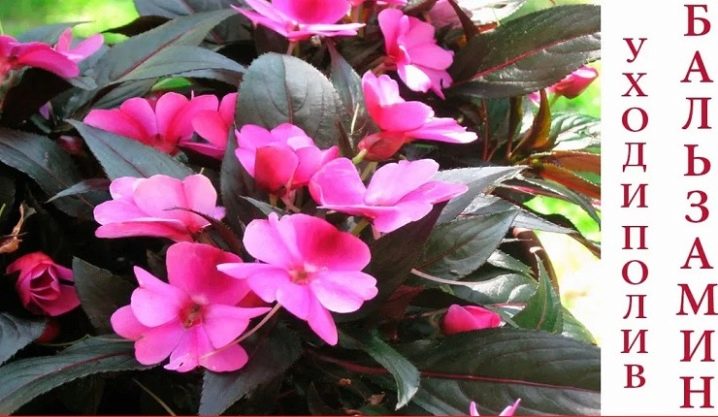
In order for the plant to feel normal, to be able to fully develop and bloom, it should be provided regular feeding... The recommended feeding frequency is about Once a month (from spring to autumn).With the onset of winter, they stop feeding the plants. Balsams do not have special requirements for air humidity, if the room temperature does not exceed + 22 ° С.
However, as the temperature rises plants begin to need humid air... In this case, flower growers recommend use household humidifiers, carry out regular spraying of the plant.
It is very important to protect balsams from drafts and cold snaps. During the flowering period, when plants are most vulnerable, drafts and lower temperatures can cause flowers and buds to fall off. For all their relative unpretentiousness, balsams do not like changing places. For this reason, they try to grow them without resorting to frequent movements from one place to another.
These plants feel very comfortable on the windowsills in the western and eastern parts of the house.
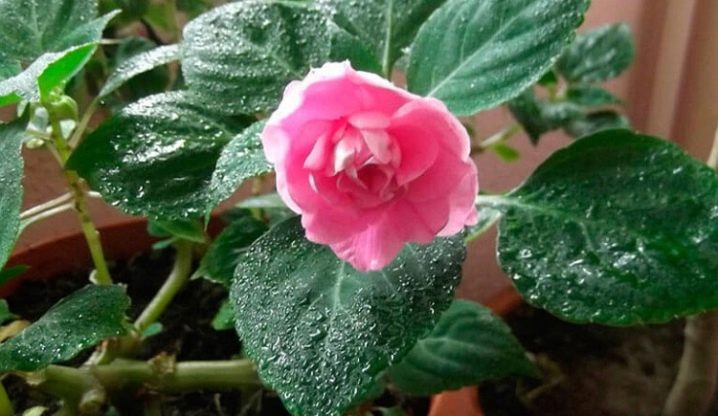
For tips on caring for balsam at home, see the video below.































The comment was sent successfully.